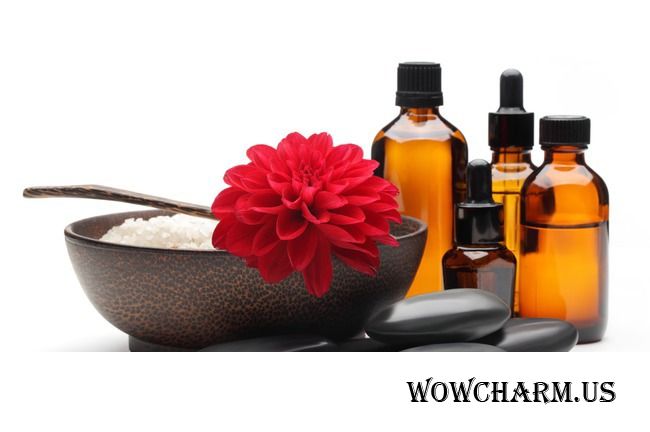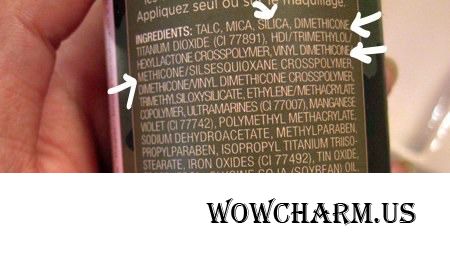Silicones in cosmetics: whether they are necessary to you?

What is silicone?
All silicones are derivative of chemical element of silicon (in the periodic table of Mendeleyev it is designated by two letters – Si). Silicon oxide – natural substance, is extracted from such minerals and substances as sand, quartz, amethyst and opal.For the first time silicon polymers appeared as a part of cosmetic products in the 1950th years when it was invented dimetikon. This type of silicone in general is not dangerous to the person, and the main disputes on the dimetikena come down to doubts concerning its impact on the environment. Yet there are no exact data whether represents dimetikon harm of ecology.
Dimetikon has several useful properties which made him popular at the cosmetologists developing cosmetic products. He has the conditioning effect on skin, protects it, improves texture of means. Thanks to this type of silicone, creams become comfortable for skin, easily slide. Besides, dimetikon possesses antifoam action that it is also important for such structures as creams, masks, serums, conditioners, means of a make-up.
So, as you understand, effect of silicone – it is rather, superficial. That is, silicones improve tactile feelings from cosmetics, do texture silkier and pliable. But there is also one more important property of silicone. This component can be considered as an easy barrier covering, it helps to keep moisture from evaporation.
When silicones are an advantage
If silicone is in hair preparations, then in this case it creates an easy covering for each lock that gives temporary feeling of silkiness and improves a hair shine. Besides, hair comb hair easier, do not sputyvatsya.Do you have unruly, dry and fluffy hair? Buy hair serum with silicone in structure, this means will well smooth a cuticle, to resist to twisting at humidity, to humidify (blocking moisture in a hair), to protect locks from overheating at hot laying or stay in the sun.

As for means for skin, useful properties of silicone found the application in a big range of products. Primers can become the most striking example. Silicone primers create a protective layer on the surface of skin, filling wrinkles and smoothing roughnesses. Means of a make-up and leaving are also enriched with silicone, in this case products show the best sliding, and their formulas "work" more effectively, silicone forms the invisible protective barrier helping active ingredients to get in skin without evaporation on the surface of skin.

The myth it is possible to call a statement that silicones hammer a time. Silicones just remain on the surface of skin, they have no ability to get deep into a time and skin.
When silicones – harm
Why silicones have opponents? All the matter is that there is a lot of kinds of silicones (more than 25!). And not all of them show equally good results.Safe it is possible to call silicones which evaporate easily and washed away from skin. But there is also steadier, and here in leaders the same dimetikon. Such silicones collect on skin and hair, it is difficult to wash away them, and the only component which can cope with them is a sulfate as a part of shampoos or skins for washing. Double harm turns out: at first silicone accumulation, then – influence by sulfates.
Other trouble – individual intolerance on some types of silicones which also quite often meets.
Of course, not any skin is so sensitive to a dimetikon and not any hair are strongly made heavier by silicones therefore means with these substances can quite approach and help someone. But if skin very sensitive, and hair thin and weak – that in this case you feel that cosmetics with silicones – not yours. Then pay attention to a natural alternative to silicones - it is oils. They work almost also: improve texture, humidify, create a protective barrier.

Announce all list
And finally – the full list of names behind which usual silicones disappear in your cosmetics (in alphabetical order):
Amino Bispropyl Dimethicone
Aminopropyl Dimethicone
Amodimethicone
Amodimethicone Hydroxystearate
Behenoxy Dimethicone
C24-28 Alkyl Dimethicone
C30-45 Alkyl Dimethicone
C30-45 Alkyl Methicone
Cetearyl Methicone
Cetyl Dimethicone
Cyclomethicone
Cyclopentasiloxane
Dimethicone
Dimethicone Copolyol
Dimethiconol
Dimethoxysilyl Ethylenediaminopropyl Dimethicone
Hexyl Methicone
Hydroxypropyldimethicone
Lauryl Methicone Copolyol
Methicone
Phenyl Trimethicones
Polydimethylsiloxane
Stearamidopropyl Dimethicone
Stearoxy Dimethicone
Stearyl Dimethicone
Stearyl Methicone
Sterile Dimethicone
Trimethylsilylamodimethicone
Vinyl Dimethicone
And how your skin and hair react to silicones?
Copy the code and insert into a window of creation of record on LiveInternet, previously having included the Source mode there.
HTML-code: 
|
|
| The BB code for forums: |
How will it look?
wowcharm.us → Silicones in cosmetics: whether they are necessary to you?

|
Modern women understand cosmetics. Now there are more and more supporters of natural or organic means. They constantly fill up the list of harmful and undesirable ingredients in cosmetics. Sulfates, phthalates, parabens were already included in it … Some unambiguously enter in this sheet and silicones. Whether they are right... Read more: |
| "Biolamination of eyelashes. (I am not afraid to wash away beauty any more) | | | RF lifting: my personal experience and results." |
|
Other discussed materials:
The 67th annual ceremony of delivery of awards of "Grammy", Part 1.
How to diversify Maslenitsa: the new culinary ideas for a holiday table
The personal cosmetologist - sauerkraut
I have gifts)) Brag
|









